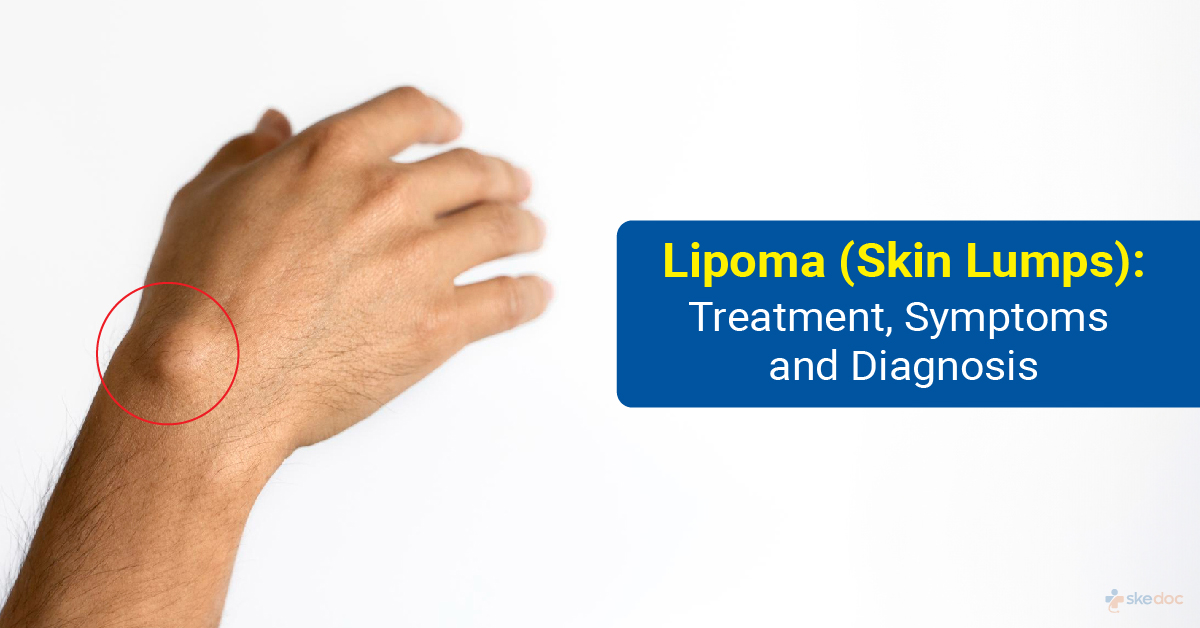Allergy
Blood Diseases
Bone & Joints
Brain
Cancer
Child Care
Cosmetic Surgery
Diabetes
Endocrinology
ENT
Eye
Gen Medicine
General Surgery
Heart
Kidney
Lifestyle
Liver & Digestive
Lung
Men’s Health
Mental health
Physiotherapy
Rheumatology
Skin and hair
Sleep Disorders
Spine
Transplant
Women Health
Thyroid
Vascular Surgery
Lipoma

What is a Lipoma?
Lipoma is a mass or lump of fat that grows slowly between the skin and the muscle layer. It is neither hard nor soft and is not firmly fixed to its surrounding tissues. It is also not painful when touched or pressed. It is of significance to note that a lipoma is not cancer.
Is lipoma a medical emergency?
Lipoma is not at all a medical emergency.
Types
All lipomas are made up of fat. However, along with fat, several other tissues may be present.
Based on this, there could be different types of Lipomas:
- Conventional: This is the most common type. It is entirely made up of fat cells.
- Hibernoma: This is made up of a different kind of fat called ‘Brown Fat'. The type of fat present in a conventional Lipoma is ‘White Fat’.
- FibroLipoma: This has a combination of fat and fibrous tissue.
- AngioLipoma: Along with fat, there are many blood vessels in this Lipoma.
- MyeloLipoma: A special tissue that forms blood cells is present along with fat.
- Spindle cell: Here, special rod-shaped cells are presently accompanying the fat.
- Pleomorphic: Although entirely made up of fat, the cells are of different sizes and shapes.
- Atypical Lipoma: The fat is much deeper and the number of cells is much higher than usual.
This differentiation is possible only after studying under a microscope.
Causes
The exact reason behind a lipoma is not yet known although, a genetic factor can be associated with it as an individual can inherit this condition from the previous generation or it is observed in multiple members of a family.
Risk factors
- Age: People of any age can develop a lipoma but it is observed that this is particularly common in those individuals between 40 and 60 years of age.
- Family history: When Lipomas are present in many members of a family, the tendency to develop is probably present in their genes. Individuals who are blood relatives to such family members are at risk of developing.
Symptoms & signs
The commonly observed features of a lipoma are:
- Location: These may develop on the back of the neck, shoulders, back, arms, thighs, and abdomen.
- Consistency: It can be described as being neither too soft nor too hard to touch. Moreover, it can be easily moved even with gentle pressure.
- Size: Most of these have a diameter of fewer than 5 centimeters. However, some lipomas can grow beyond this regular size.
- Other symptoms: Rarely, when a lipoma grows too big, it may press onto a nerve or it may contain many blood vessels. This involvement of the nerves and the blood vessels can make this a painful one.
Investigations
Tests have to be done in case of a lipoma only when a doctor suspects a liposarcoma. When it turns into harmful cancer, it is called liposarcoma. This conversion is very rare.
- Biopsy: Biopsy is a small sample of tissue taken from the lump. This sample is then observed under the microscope to find out if the lump is a lipoma or a liposarcoma.
- CT and MRI scan: These scans would be needed in that rare scenario wherein a lipoma has grown very rapidly into the deeper tissues.
A doctor suspects a liposarcoma when:
- It is not possible to find out the extent of growth of the lump by a physical examination
- The lump is painful
- It is not as soft as it would be in a lipoma
Diagnosis
The diagnosis is done mostly through a detailed physical examination by careful observation of the features of the lump such as its texture, mobility, and whether it is causing any pain or not.
Treatment options
Medical treatment
Medications don’t have much role in the treatment of a lipoma.
Interventional treatment including surgery and indications for surgery/ Surgical treatment
The surgical method is chosen when:
- These are painful or the person feels that it is cosmetically unacceptable
- A large number of lipomas are present
- This can be too large
- The person has a history of skin cancer
- The person is a blood relative to another person who has or has had skin cancer
The modalities include:
- Excision: This is a surgical method wherein the lipoma is removed under local anesthesia, by making small cuts in that part of the skin.
- Liposuction: This involves removing the fatty lump(lipoma) with the help of a needle fixed to a large syringe.
Prognosis
A lipoma is a harmless mass, and the quality of life of a person is very good. Even if treatment is required the outcomes are very favorable with almost no complications.
When to contact the doctor? / How to identify the complications?
A Lipoma is not a condition that mandates immediate medical attention. This being a harmless lump, it can be ignored most of the time. However, if it starts becoming painful, or it affects the individual’s appearance it is certainly advisable to seek medical consultation.
Indications for hospitalization if required
There is no need for hospitalization even if removal of the lipoma is considered. Almost always, these procedures are carried out as day-care surgeries and the individual can be discharged on the day of the surgical procedure.
Suggested clinical specialists/ Departments to consult for this condition
A general surgeon can be consulted for the treatment of a lipoma.
Was this article helpful?
YesNo




